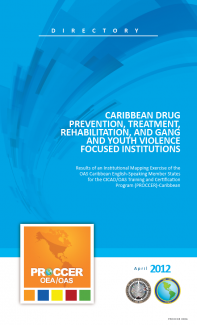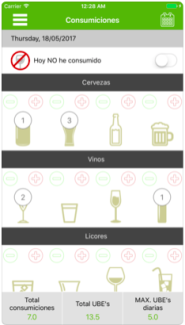Applying interventions designed to reduce and manage the symptoms of substance use disorders.
Treatment
Barriers to Addiction Prevention and Treatment in Communities with Organized Crime: The Perspective of Health Providers
ABSTRACT Introduction: The presence of organized crime may encourage an increase in the supply of illicit substances, the incorporation of young people into crime, the promotion of substance-oriented lifestyles, and the use of violent...
Dilemmas in Recovery‑Oriented Practice to Support People with Co‑Occurring Mental Health and Substance Use Disorders
Abstract Background Recovery-oriented practice is recommended in services for people with co-occurring mental health and substance use disorders. Understanding practitioners’ perceptions of recovery-oriented services may be a key component...
European Drug Report 2018
The European Monitoring Centre on Drugs and Drug Addiction (EMCDDA) has released their latest European Drugs report. Covering 30 European countries the report explores drug trends, developments in prevention and treatment, public health...

Caribbean Drug Prevention, Treatment, Rehabilitation and Gang and Youth Violence Focused Institutions
The Directory of drug prevention, treatment, rehabilitation, and gang and youth violence focused institutions in the English-Speaking Caribbean was compiled from the results of an agency mapping exercise conducted for the CICAD/OAS Training...

Effectiveness Bank Matrix Cell: Elusively Important: The Practitioner in Psychosocial Therapies
Key studies on the impact of the practitioner in psychosocial therapies. Takes Carl Rogers’ seminal work as its starting point, explains why being genuine sometimes means breaking the ‘rules’, and why effective therapy is not just a matter...

Humphrey Fellowship Program
The Humphrey Fellowship Program, sponsored by the US Department of State’s Bureau of Educational and Cultural Affairs, is a US government international exchange program supported by the people of the United States. Fellowships are granted...

Using Technology in the Field of Substance Use
This special news article is focused on all things digital - exploring e-health, d-health, m-health and u-health.
Sideal Spanish Language App for Alcohol Use
Sideal is a self-help app available in Spanish for people experiencing alcohol dependance. The app offers advice on reducing consumption and abstinence. The app can be used to set and track goals that someone has set for themselves or one...

CADCA’s 17th Annual Mid-Year Training
Community Anti-Drug Coalitions of America (CADCA) will host their 17th Annual mid-year training event on July 15th-19 2019 in Orlando, Florida.

22nd International AIDS Conference 2018
The 22nd International AIDS Conference will take place in Amsterdam from 23-27th July 2018.
The conference will explore topics such as innovations around HIV and substance use, epidemiology of indigenous populations, models of prevention, drugs and drug policy, and meeting the needs of young people from key populations.
